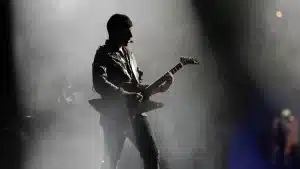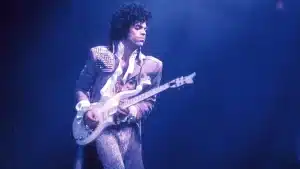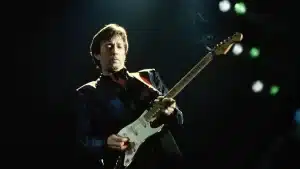Jeff Beck has long been one of the pantheon of greats, yet he remains an enigma. He first made his name playing in the Yardbirds, and alongside Page and Clapton forms the Holy Trinity of British rock guitarists. He has won a hat-full of Grammys and been inducted in the Rock And Roll Hall Of Fame (twice!), played with the likes of Mick Jagger, Brian Wilson, Stevie Wonder and – of course – Beck (no relation).
But (Jeff) Beck still has mystery about him. He has constantly evolved; from his blues and classic-rock roots, he has navigated through funk, hard rock, jazz, dance… He stopped using a pick decades ago, and now has this dynamic fingerstyle that’s at once aggressive, full of rhythmic chutzpah, super-smooth and mellow.
His phrasing is always considered, his right hand always jockeying his Strat’s vibrato. Beck has used Fender Esquires, a 1956 Gretsch 6128 Duo Jet, Les Pauls; he even used a Jackson Soloist on 1985’s Flash. Yet, he’s long been synonymous with Strats, favouring his white ’93 Custom Shop above all else. You’ll find Marshall and Fender amps in his backline, too. But the gear is just a fraction of the story. The rest is in his head and hands, just out of reach for we mere mortals.
Here in this tutorial, I’ll take you through Jeff’s approaches and unique sound, showing you some of the tricks he employs to coax beautiful, seemingly impossible sounds from his Strat. String bending, whammy bar scoops, tapping, Indian-style melodies and Mixolydian modes are all on the menu, so plug in and let’s get bending like Beck can!
Example 1: Drop D Mixolydian Riff

You’ll need your guitar in drop D tuning for our first example. The riff uses several two-note chords to help spell out the D Mixolydian mode (D E F# G A B C). Use your thumb to pick the sixth string, your first and second fingers for the doublestops and your third finger only on the higher strings.
Example 2: Spelling the Chords

As well as subtle use of the whammy bar for Indian-style sounds in bars 1 and 2, each of these four bars targets important chord tones such as the root note, the 3rd and the 5th. Use your thumb and first finger for the melodic run in bar 3.
Example 3: Harmonica-style Lick

Jeff’s unique way of approaching simple bluesy harmonica-style 3rd ideas such as this is to pivot between his thumb and index finger.
Example 4: Tapping Lick

This idea targets the important major 3rd (a 4th-fret F# note) and b7th (10th fret C) from the D Mixolydian mode. Make sure to mute the idle strings.
Example 5: Slide Guitar Emulation

This subtle approach is central to a lot of Jeff’s playing. The idea is to use the whammy bar to change smoothly from note to note, much like you would do if you were using a slide. Pick with your thumb and first finger, and use the three spare fingers of your pick hand to control the bar.





